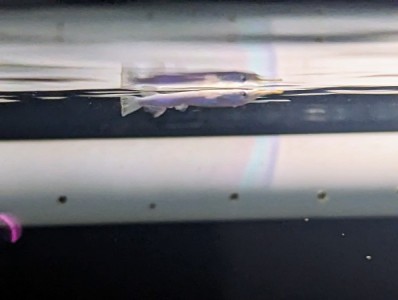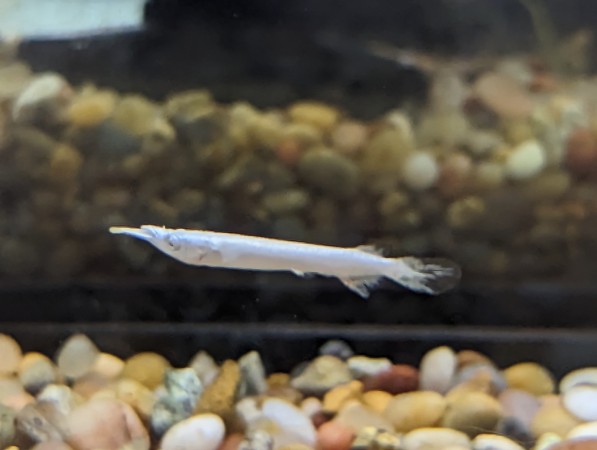- Name:
Platinum Half Beak
(View AKA's) - Family: Zenarchopteridae
- Species: Halfbeak
- Scientific Name: Dermogenys pusilla


Statistics
-
Difficult
Care Level
-
Aggressive
Temperament
-
Omnivore
Diet
-
0%
Reef Safe
- 75
Temp (Temperature)
- 7.9
pH (pH)
- 0
NH3-4 (Ammonia)
- 80
NO3 (Nitrate)
- NAN
PO4 (Phosphate)
- NAN
AT (Alkalinity)
- NAN
Ca (Calcium)
- NAN
Mg (Magnesium)
- NAN
SG (Salinity)
- NAN
ORP (Oxidation Reduction Potential)
- 0
Avg. Size (Inches)
- 75
Avg.Tank Size (Gallons)
- 1
Avg Life (Years)
Statistics above are based off of 1
user
who have claimed.
More Details
General info about Platinum Half Beak
Surface area is more important, so long tanks are better than an aquarium deep for this species. The Platinum Half Beak spends most of its time just below the water surface. The addition of dense planting around the edges of the tank will lessen the possibility of damaging its delicate mouthparts by banging into the glass. It is also an excellent jumper, so a layer of floating vegetation is a good idea, as is a tightly-fitting cover. Decor below the surface is not essential and is a matter of personal preference. They have been been found in brackish waters with salinity as high as 1.005, but as long as the water is hard and fairly alkaline, it should be ok in freshwater. Water changes should be small and frequent as it is sensitive not only to deteriorating water quality but also to sudden swings in temperature or chemistry. Male to 2.2″ (5.5cm), female to 2.8″ (7cm).
Platinum Half Beak Origin
Widespread in nature, they can be found in India, Myanmar, Thailand, Laos, Cambodia, Vietnam, Philippines, Malaysia, and Indonesia.
Relevent Articles
Original Detail
| Name | Species | Family | Scientific Name | More Detail | Added by |
|---|---|---|---|---|---|
| Platinum Half Beak | Halfbeak | Zenarchopteridae | Dermogenys pusilla | Surface area is more important, so long tanks are better than an aquarium deep for this species. The Platinum Half Beak spends most of its time just below the water surface. The addition of dense planting around the edges of the tank will lessen the possibility of damaging its delicate mouthparts by banging into the glass. It is also an excellent jumper, so a layer of floating vegetation is a good idea, as is a tightly-fitting cover. Decor below the surface is not essential and is a matter of personal preference. They have been been found in brackish waters with salinity as high as 1.005, but as long as the water is hard and fairly alkaline, it should be ok in freshwater. Water changes should be small and frequent as it is sensitive not only to deteriorating water quality but also to sudden swings in temperature or chemistry. Male to 2.2″ (5.5cm), female to 2.8″ (7cm). | PalaciosAn |
Changed by users
| Submitted Date | Submitted By | Status | Action |
|---|


